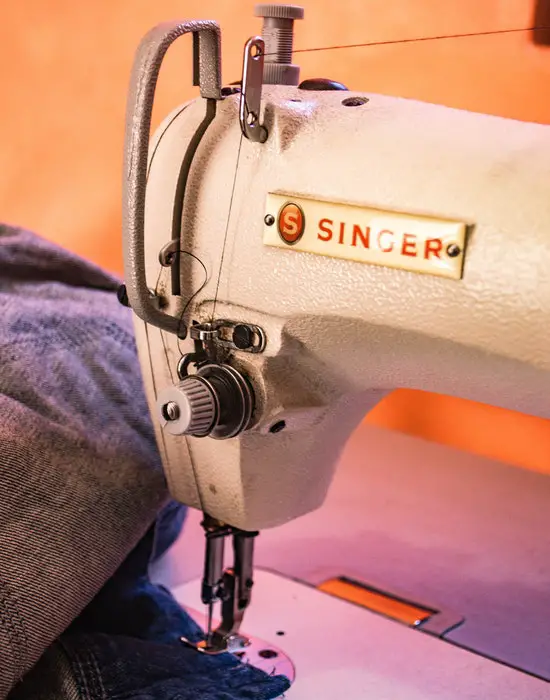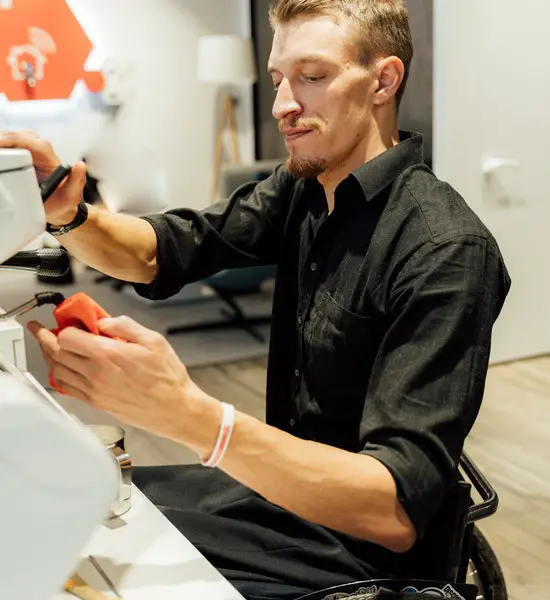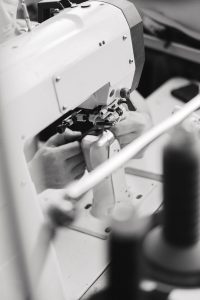How to Oil an Older Singer Sewing Machine (8 steps)
Singer sewing machines are great tools for creating beautiful clothing.
They are also handy for those who sew their clothes. However, if you want to get the best out of your Singer machine, you should learn how to oil it properly.

Oil your old Singer machine regularly to ensure its longevity. Oil helps prevent rusting and keeps the parts from wearing down over time. This blog post shows you how to oil an older Singer sewing machine.
Step – Choosing The Oil
The first step in oiling your Singer machine is choosing the right type of oil; you have two options.
First, you can choose either synthetic or mineral-based oil.
Synthetic oil is made from petroleum products.

It has many advantages, such as being easy to apply and clean.
It is also inexpensive.
On the other hand, mineral-based oil is made from natural ingredients.
This type of oil is better for your Singer sewing machine because it will last longer.
In addition, it is much safer for your Singer sewing machine.
Which Is Better For My Singer Sewing Machines – Synthetic Or Mineral-Based Oils?
Both types of oil work equally well for your Singer sewing tool, but there are some differences between them.
For example, mineral-based oil lasts longer than synthetic oil.
Synthetic oil is more accessible to apply than mineral-based oil.
Mineral-based oil is cheaper than synthetic oil.
Although both types of oil are safe to use, mineral-based oil works better in keeping your Singer machine running smoothly.
Step: How Much Oil Am I Allowed To Use On My Singer Sewing Machine Every Time?
You must follow a few rules when using any oil on your Singer sewing machine.
First, do not use too much oil.
If you use too much oil, you may damage your Singer sewing machine. Too much oil may cause your Singer sewing machine to burn up.
Second, do not use too little oil.
Using too little oil can result in clogged threads.
Third, always use fresh oil every time.
Old oil may be contaminated with dust particles that could damage your Singer sewing machine’s internal components.
Finally, never use more oil than what is recommended by the manufacturer.
Each manufacturer recommends different amounts of oil that you can use each time.
You can find this information on the label of your oil container.
Most manufacturers recommend using 1/2 cup (120 ml) of oil per hour.
Step: Determine When to oil your singer machine.
There are several ways to determine when to oil your Singer sewing tool.
One way is to check the manual that came with your machine.
Another method is to look at the amount of oil that comes from the oil bottle.
After determining when to oil your Singer machine, you must decide where to put the oil.
You can place the oil in the reservoir, the oil pan, or the bobbin case.
Choose one of these three places depending on which part of your Singer sewing machine requires lubrication most often.
Place the oil in the reservoir if you frequently plan to use the machine.
Put the oil in the bobbin case if you plan to do many small projects.
And place the oil in the oil pan if you plan to do larger projects.
Step: Cleaning parts before oiling
Before applying singer sewing machine oil, you need to make sure all of its parts are clean.
First, clean the parts thoroughly to remove any dirt or debris.
Next, use a soft brush to scrub away any stubborn stains gently.
Then wash the parts with soap and water.

Do not use harsh detergents or abrasive cleaners.
These chemicals might damage the surface of your Singer sewing machine.
Step – Preparing Your Sewing Machine For Oiling
After cleaning your Singer machine’s parts, you can prepare them for oiling.
- First, make sure that the machine is unplugged and turned off.
- Next, remove the needle plate and presser foot assembly.
- Finally, unscrew the bobbin case cover.
- Take out the bobbin winder.
- Lubricate the parts with the oil that you chose earlier.
- Replace the parts in the machine.

Turn the power switch on and plug the machine back in.
Now you are ready to start oiling your singer machine.
Step – How To Oil an older Singer Sewing Machine Properly
To keep your Singer sewing machine running smoothly, you must oil it correctly.
The first thing you need to know about oiling is that you cannot just pour oil onto your Singer sewing machine. Instead, you need to apply it carefully.
Apply a few drops of oil as needed.
Never put oil directly on your Singer sewing machine’s motor or other moving parts. It may damage these parts.
Instead, apply the sewing machine oil to the machine’s base where the parts are located.
This will help distribute the oil evenly throughout the entire machine.
Start at one end of the machine and work towards the other end.
Do not move the parts while applying the oil.
It takes a lot of patience to apply the oil evenly.
However, once you master this skill, you will be able to enjoy your Singer sewing machine for years to come.
Step – Preventing Oil Spillage
It would help if you stopped oil spillage immediately while oiling your Singer sewing machine.
Stop oil spillage by placing a rag or paper towel underneath the machine.
This prevents oil from dripping onto the floor.
Place another piece of cloth under the machine to absorb any remaining oil.
This way, you can avoid having any spills on your floor.
Step Protect yourself from the oil.
When you finish oiling your Singer sewing, you must protect yourself from the oil.
- Wear gloves when doing so.
- Also, wear shoes that you can easily take off.
- Keep the area around your Singer sewing machine clean.
- Clean up any spilled oil immediately.
- Hire a professional if you are unable to clean up the mess yourself.
- Remember, oil is toxic.
So, always follow safety precautions whenever you are working with oil.
Conclusion
In conclusion, we hope that this guide has helped you learn how to oil your Singer machine.
We have provided everything that you need to know about this process.
Please ask us in the comments section below if you have more questions.
Happy sewing!




One Comment